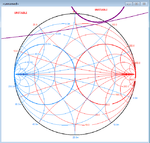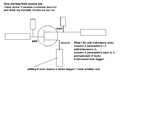Terminator3
Advanced Member level 3
Hello! After calculating inductive stub, i have problem how to attach it in microstrip: FET have two source pins.
Assume my inductive stub is L, how i must attach it?
1) attach L short stub to one of source pins, other source pin is directly grounded
or
2) attach L to both of source pins.
3) maybe attach L/2 to both source pins?
Assume my inductive stub is L, how i must attach it?
1) attach L short stub to one of source pins, other source pin is directly grounded
or
2) attach L to both of source pins.
3) maybe attach L/2 to both source pins?

